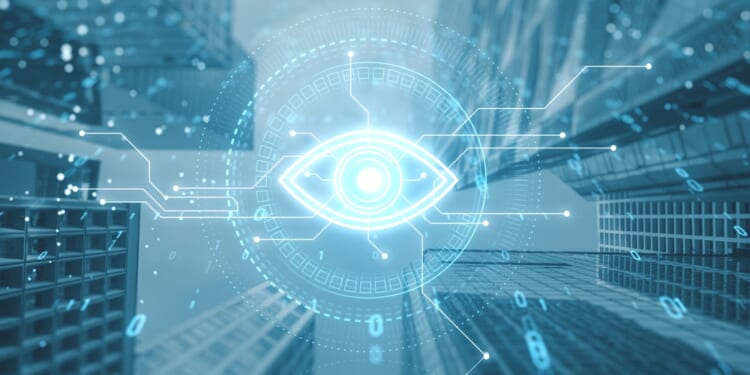Person of Interest offered more than entertainment—it foreshadowed today’s AI dilemmas of surveillance, control, and human judgment in an age of intelligent machines.
“If you want to make something that understands human behavior, it must be at least as smart as a human.” It’s a line by a character from the CBS television show Person of Interest (POI). The statement is an umbrella for the many plot twists in the dystopian drama in which one of the central characters is an artificial intelligence (AI) referred to as the “Machine.” The various storylines in the five seasons of POI provide an interesting preview of possible issues that society may face now that AI is here. The challenge becomes an AI that is not only as smart, but could supersede human intelligence.
Surveillance, Ethics, and the Birth of the Machine
The central plot of POI deals with the development of an AI for surveillance purposes, with potential for abuse by both government and misguided private sector participants alike. The show features a reclusive tech wizard billionaire, Harold Finch, who develops the Machine initially for altruistic motives. It first aired in September 2011, after the tenth anniversary of 9/11. Harold’s primary intent is to create an AI that can detect terrorism before it happens. In the POI universe, there are surveillance cameras everywhere, which, along with all electronic communications, are monitored by the Machine. It provides the POI team, led by “the man in the suit,” with social security numbers of “persons of interest” which they must then determine to be victims or perpetrators of a crime. Harold indicates he programmed the Machine to provide only numbers so that human judgment could take over from there.
The POI team becomes vigilantes whose mission is to anticipate and save innocent people from harm using information from the Machine. They must deal with the fact that the Machine is neither benevolent nor malicious, but rational by design. It also presents several potential questions for society as the novelty of AI fades, and the real consequences, both positive and negative, become clearer. When Harold recognizes the growth in intuition and perception of the AI, he attempts to contain it by erasing its “memory” at the end of each day.
In addition to making exciting television plotlines, including rival gangs and mobsters, the show introduces a competing AI, named Samaritan, which was created by one of Harold’s former Massachusetts Institute of Technology (MIT) classmates. Samaritan is a shadowy government project and acts to save humanity from itself. Its mission is to remake society, even if that means removing people standing in its way. Harold and the vigilantes determine that if the Machine and Samaritan collide, the result will be global destruction.
From Fiction to Reality: The AI Race
Since the end of this series in 2016, the capabilities of AI in both the commercial and security sectors have grown exponentially. It did not deal with themes such as worker displacement or economic consequences, which would have been too mundane for television. It depicts the potential disastrous outcome, even if AI is originally programmed for a benevolent mission, as well as the unknown if it can become sentient beyond its human creator’s intent. It also raises existential questions regarding the critical balance of privacy and security, which will reach a new height with the permeation of AI into every aspect of society. The tensions in the series are among the various characters whose motives are control and improving the human condition, which becomes framed as a proxy war between the Machine and Samaritan. It raises the possible question of creators ceding control to an AI that becomes independently intelligent.
It doesn’t broach the complexity and reality of AI geopolitics as it avoids a narrative depicting the countries of adversarial threat. Today, it remains to be seen what sort of AI the People’s Republic of China or Russia are in the process of creating. In its incipient stages, to the extent AI is operated by human intelligence, including military capacity, there will be an entirely new paradigm established among global armed powers. The greatest innovations in AI, whether it’s the chips and energy required or the complex code to power super intelligence, will continue to occur in America. Authoritarian regimes such as China, however, have no boundaries on privacy or the rights of citizens when deploying AI. The public currently lives in a surveillance state, and a Samaritan-like system is entirely plausible there, as are Skynet and the Ministry of Truth.
A SMART Strategy for an AI Future
The most salient guidance for US policymakers is to distill dystopian issues from cinema fantasy into bite-sized realities. In order to address the superintelligence created by human beings, the government and the private sector will need a SMART strategy:
I. Strategic Engagement of the Private Sector
If Harold Finch were real, it would be essential for the US government to know who he is and understand how he created the Machine. The current Trump administration has a strategy to partner with the private sector, engaging with chip-making powerhouse Nvidia CEO Jensen Huang and with AI creators such as OpenAI CEO Sam Altman. America’s competitive advantage has always been a system that promotes and rewards innovation. This will continue in the AI age. Finding the right strategic engagement with private sector talent will be even more critical than ever.
II. Maintaining a Balance of Competing Interests
The characters in POI often refer to privacy versus the need for security. It is a theme recurrent in the history of government regulation, particularly after the tragedy of 9/11and ensuing events. The public must consent to enhanced screening at airports, federal buildings, and various locales, even placing liquids in small bottles in clear plastic bags. The challenge of this balance will grow infinitely if and when AI systems are used for screening the public. It will be particularly incumbent upon regulators to strive to uphold civil liberties while also ensuring public safety with a responsible framework.
III. Allied Country Cooperation
The US government should partner with both allied governments and the global private sector to cooperate on AI innovations that will be beneficial for national security alliances. For decades, the US government has seen the theft of intellectual property by China to advance both commercial and military capacities in adversarial pursuit of US interests. The AI universe calls for alliances beyond the existing marginally relevant brands of organizations, such as the North Atlantic Treaty Organization (NATO). The next great conflict has the potential to be a hyper-scale cyber war involving both state and non-state actors. The United States and its allies should be prepared.
IV. Retaining a Human Intelligence Workforce
POI flashback scenes revealed that Harold is from a small town in Iowa—a brilliant, awkward teenager who eventually attends MIT and finds his footing in the tech world by creating the Machine. In allied country democracies such as India and Taiwan, education in tech fields is desired and encouraged. US companies allege that there is a dearth of such talent among American-educated students. Therefore, the H1B visa category was developed to recruit skilled foreign workers. The H1B visa was intended to be a supplement rather than a substitute for a domestic tech-skilled, trained workforce. US policy should encourage and incentivize domestic students early in secondary education to become equipped for an AI future.
V. Tracking Advances of Global Adversaries
In addition to building a domestic AI universe by engaging the private sector, preserving public interest, cooperating with allies, and cultivating home-grown talent, it is also essential that the US government track adversarial entities. In order to maintain a national security advantage, the combination of private sector information as well as government intelligence will enable an understanding of how and where cyber threats against American interests originate. And even more importantly, how to anticipate and neutralize threats before they impact our commercial and security ecosystem.
Lessons from Fiction: Using Human Intelligence Before Machine Intelligence Prevails
In conclusion, the storylines of Hollywood’s dystopian AI future may or may not accurately reflect the future of AI. Certainly, painting a picture of a villainous AI combined with unchecked state surveillance makes for entertaining television and movies. POI was highly rated by both viewers and critics. However, the show and other AI-centered movies such as The Terminator, Blade Runner (1982), and Her depict some very real issues that will exist once AI becomes a part of business and households alike. It is critical to use present human intelligence to anticipate and decode these issues because when it comes to AI, the future is now.
About the Author: Manisha Singh
Manisha Singh is Founder and Principal of Sunstone Strategy Group. She is also the Senior Fellow for Artificial Intelligence and National Security at the Krach Institute at Purdue University. She served as Assistant Secretary for Economic and Business Affairs (2017-21), as well as Acting Under Secretary, at the US Department of State. In 2020, she was nominated to be the US Ambassador to the OECD.
Image: Who is Danny/shutterstock

















